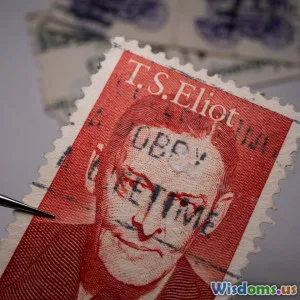
Understanding the Mechanics of Secret Organizations
6 min read Explore the inner workings and structures of secret organizations and what makes them endure. (0 Reviews)
Understanding the Mechanics of Secret Organizations
Secret organizations have fascinated humanity for centuries. Portrayed in fiction as shadowy cabals and in reality as enigmatic groups influencing politics, economics, and culture, these entities captivate our curiosity. But what mechanisms allow such organizations to survive, thrive, and operate undetected? This article dives into the inner workings of secret organizations, exploring their structures, communication strategies, recruitment methods, and enduring influence.
The Allure and Persistence of Secrecy
Secrecy confers a strategic advantage. Organizations like the Freemasons, the Illuminati, or more modern intelligence agencies capitalize on hidden knowledge to build power and cohesion. The cloak of mystery not only attracts new members but protects them and the organization’s goals from external threats. Historian Manly P. Hall once noted, "The possession of secret knowledge gave these societies a sense of exclusivity and superiority, which reinforced member loyalty."
Secrecy isn’t merely about withholding information; it cultivates an environment of trust among members, bound by shared confidences and rituals.
Hierarchical Structures: Balancing Transparency Within and Opacity Without
Most secret organizations employ tiered hierarchies. For example, the Freemasons operate through degrees or levels, where knowledge and privileges increase as members ascend.
Example: The Freemasons’ Degree System
- Entered Apprentice: Novice status exposing initial teachings.
- Fellowcraft: Intermediate illuminations broadening the member's knowledge.
- Master Mason: Full membership, access to deeper rites.
Such graduated memberships create an internal clarity and honesty about roles, contrasting with the outer veil of mystery. This system encourages progression, sustains engagement, and protects the organization's core secrets by restricting sensitive information to higher echelons.
Rituals and Symbolism: Cementing Identity and Commitment
Secret organizations often rely on elaborate rituals and symbol systems. These serve multiple functions:
- Identity Formation: Creating a shared culture that transcends ordinary associations.
- Psychological Impact: Initiation rites mark a significant transformation in status and personal identity.
- Communication: Symbols provide encrypted communication and recognition among members.
For instance, the skull and crossbones have been used historically by groups like the Skull and Bones society at Yale, signifying mortality and secrecy simultaneously, while Masonic symbols such as the square and compass encapsulate moral lessons.
Methods of Communication: Preserving Secrecy in a Connected World
Historically, secret societies relied on ciphers, coded letters, and intermediaries. Today, encryption technologies have transformed these communications.
Still, many groups prefer secure in-person gatherings or the use of 'dead drops' – covert exchange points.
Real-World Insight: Intelligence Agencies
Agencies such as the CIA or MI6 use a blend of digital encryption, anonymous drop sites, and cover identities. Their communication is multi-layered to evade detection and interception. This approach is mirrored in semi-underground organizations aiming to avoid external infiltration.
Recruitment and Membership: Entry Through Exclusivity
Recruitment is often shrouded in mystery and selectivity to maintain an organization's integrity. Factors impacting recruitment include:
- Selective Invitation: Members are often chosen based on social standing, expertise, or trustworthiness.
- Probationary Periods: Trial phases ensure genuine commitment.
- Personal Vetting: Psychological and background checks reduce risk of exposure.
For example, the Rosicrucian Order reportedly employed a system of written manifestos and coded correspondences inviting intellectuals.
Influence and Power: Beyond the Veil
Secret organizations tend to amass influence incrementally:
- Network Building: Members hold positions of power across different sectors.
- Policy Impact: Strategic placements enable shaping of decisions at high levels.
- Cultural Shaping: Through symbolism and art, groups subtly alter societal values.
Historian Antony C. Sutton emphasized in his research how some clandestine groups purportedly worked behind the scenes to direct technology and finance.
Challenges and Modern-Day Adaptations
The explosion of digital surveillance and social networking challenges secrecy. However, these organizations have adapted by:
- Embracing advanced encryption.
- Utilizing compartmentalization techniques.
- Increasing use of plausible deniability.
For example, cryptocurrency adoption offers anonymous financial transactions, facilitating secret organizations’ funding.
Conclusion: A Complex Web of Secrecy and Strategy
The mechanics of secret organizations intertwine psychology, structure, communication, and culture in a delicate balance. Understanding these systems reminds us that secrecy is a tool—one wielded carefully to protect knowledge, influence power, and ensure survival across centuries.
This knowledge encourages critical thinking about transparency and trust in modern institutions, urging vigilance about what operates unseen but not unfelt in our societies.
Embark on studying these mechanics further to appreciate both historical legacies and the evolving influence of secret organizations in our contemporary world.
Rate the Post
User Reviews
Popular Posts




















